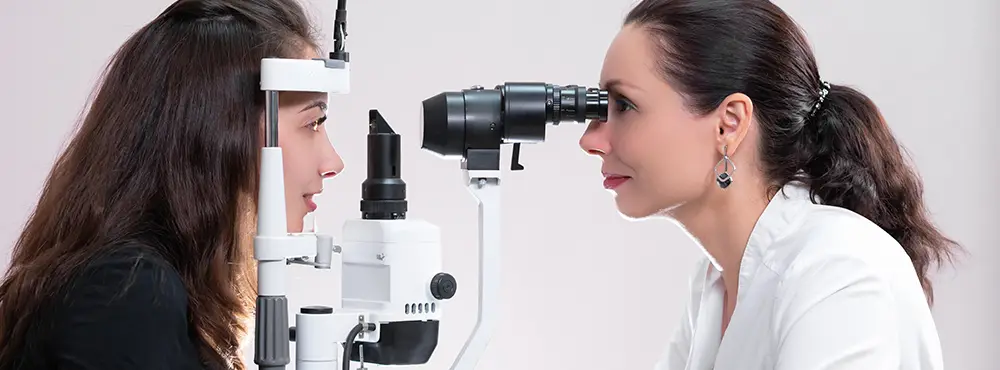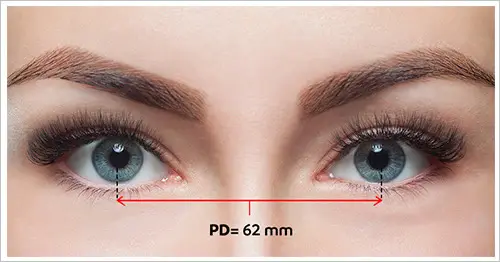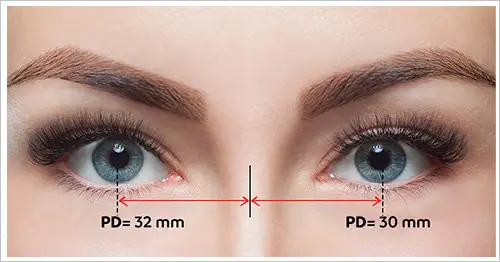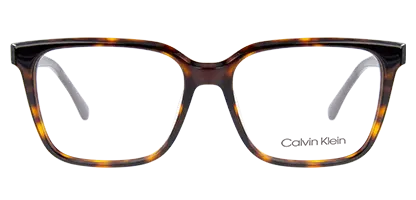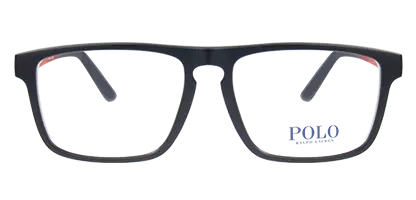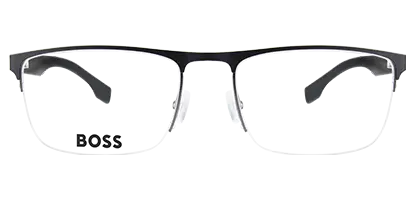Measuring your pupillary distance might sound tricky, but it can be quick and easy if you follow our guide. This article has been reviewed by our Dispensing Optician, Wut Win, with over 17 years of optical experience, we cover how to measure your PD using three methods:
- Old glasses
- Mirror
- With a friend
What is pupillary distance?
Our Dispensing Optician defines pupillary distance as:
“The measurement of the horizontal distance between the centres of your right and left pupils (the black part in the middle of your eye).”
This measurement is crucial when buying glasses as it ensures that when you are wearing your glasses, you are looking through the right part of the lenses – this will ensure optimal vision clarity and comfort. This is even more crucial for high RX and Varifocal prescriptions.
Your pupillary distance is a critical piece of information needed to produce your glasses properly. An incorrect pupillary distance can significantly impact your vision. It's like wearing someone else's glasses – you may experience eye strain, eye fatigue, headaches, and blurry vision. If you have a high prescription, these symptoms can be even more severe.
Please note: Your PD is measured in millimetres. It is often recorded as one value (e.g. 66mm); most adults have PDs between the range of 54mm and 72mm.
What is a single PD or dual PD?
- Single PD is the standard distance between the centres of both pupils
- On the other hand, dual PD measures the distance from each pupil’s centre to the bridge of the nose
Please note: Both measurements assist in determining lens fit; however, the latter is often considered more accurate.
Why is my pupillary distance not on my prescription?
As it is part of the dispensing service, you won’t usually find this information on your prescription.
Some opticians may provide you with this information after an eye test, but they aren’t legally required to do so.
Fortunately, there are alternative ways to find this out such as using an old pair of glasses, a mirror or a friend.
Three ways to measure your pupillary distance
With our easy-to-measure guide, we are providing you with a millimetre ruler to use. To print this off:
- Click the ‘Print’ button to open the millimetre ruler. Alternatively, you can click here.
- On the right-hand side of the page, click the printer icon to print the millimetre ruler.
- Follow the instructions on the page and start measuring!
Please note: Do not resize the image, as the ruler is to scale; therefore, resizing will give you incorrect measurements.
1. Use an old pair of glasses
Take the following steps:

1. Put on the glasses and look straight ahead at yourself in the mirror.
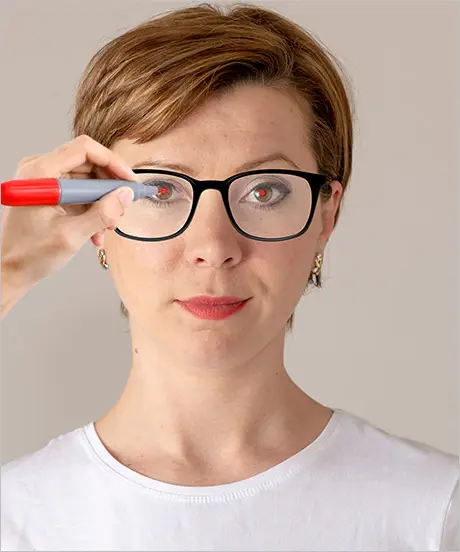
2. Use a marker pen to mark a dot on your left and right lenses, marking the position of your pupils.
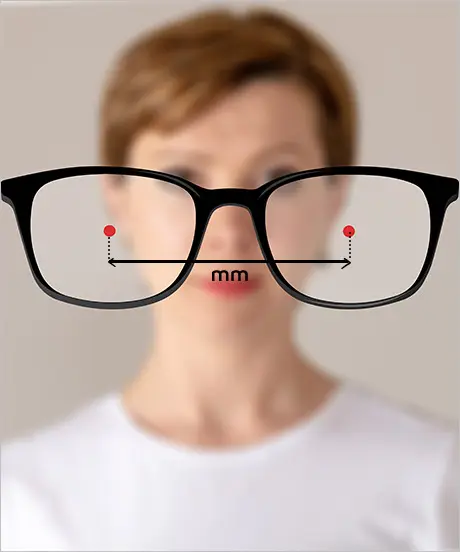
3. Remove glasses and measure the distance between both the marked dots using the millimetre ruler. The distance between these dots is your pupillary distance.
Take the following steps:

1. Stand in front of a mirror and look at yourself and hold a ruler up to your upper eyelids horizontally and centre the zero above your right pupil.
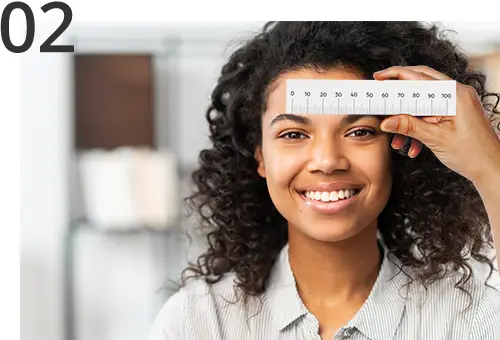
2. Rest the scale on your forehead and the bridge of your nose then close your right eye. The number on the scale directly over your left pupil is your answer.
Follow these steps:
1. Focus on an object in the distance with both eyes open.
2. Have your friend positioned just outside your peripheral vision at roughly the same height as you and get them to hold the ruler over your upper eyelids, resting on your forehead and the bridge of your nose.
3. Ask them to line up the ruler's 0mm marking to your right pupil and measure across to your left pupil. The distance on the ruler (between your pupils) will be your pupillary distance.
4. Make sure that your friend stays out of your line of sight. Keep looking straight ahead with your eyes as still as possible, and don’t look at your friend.
5. Do this with your friend a few times to make sure you get a consistent measurement.
How do you calculate near PD?
For reading glasses, you’ll need a near pupillary distance:
To calculate this, subtract 3mm from your original measurement. For example, if your measurement is 57mm, for reading glasses, it will be 54mm.
If you are calculating using your dual PD:
Subtract 1.5mm from each eye's measurement.
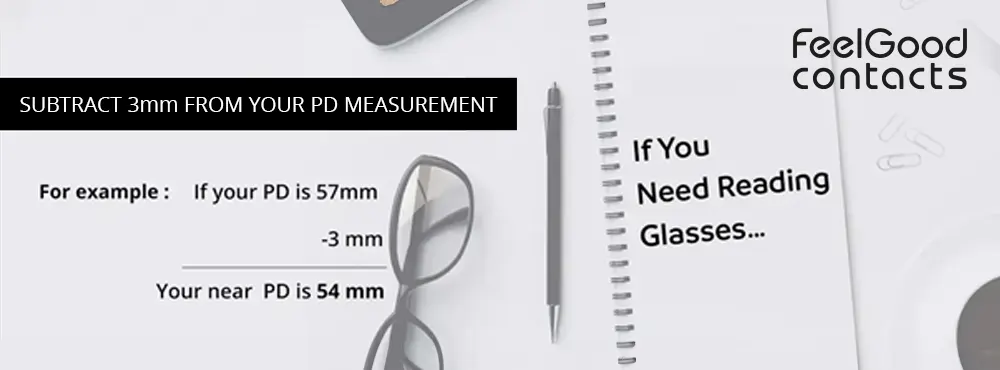
How to enter your PD when placing an order
Once you’ve got the measurements, you can shop for a lovely new pair of frames. Our glasses are sourced directly from the manufacturer, so you can shop with ease at Feel Good Contacts. Why not browse some of our customer favourites:
When you’ve selected your frames, you’ll be asked whether you want to enter your prescription details now or later. If you have your prescription and PD to hand, you can choose to enter now, where you’ll be directed to this page:
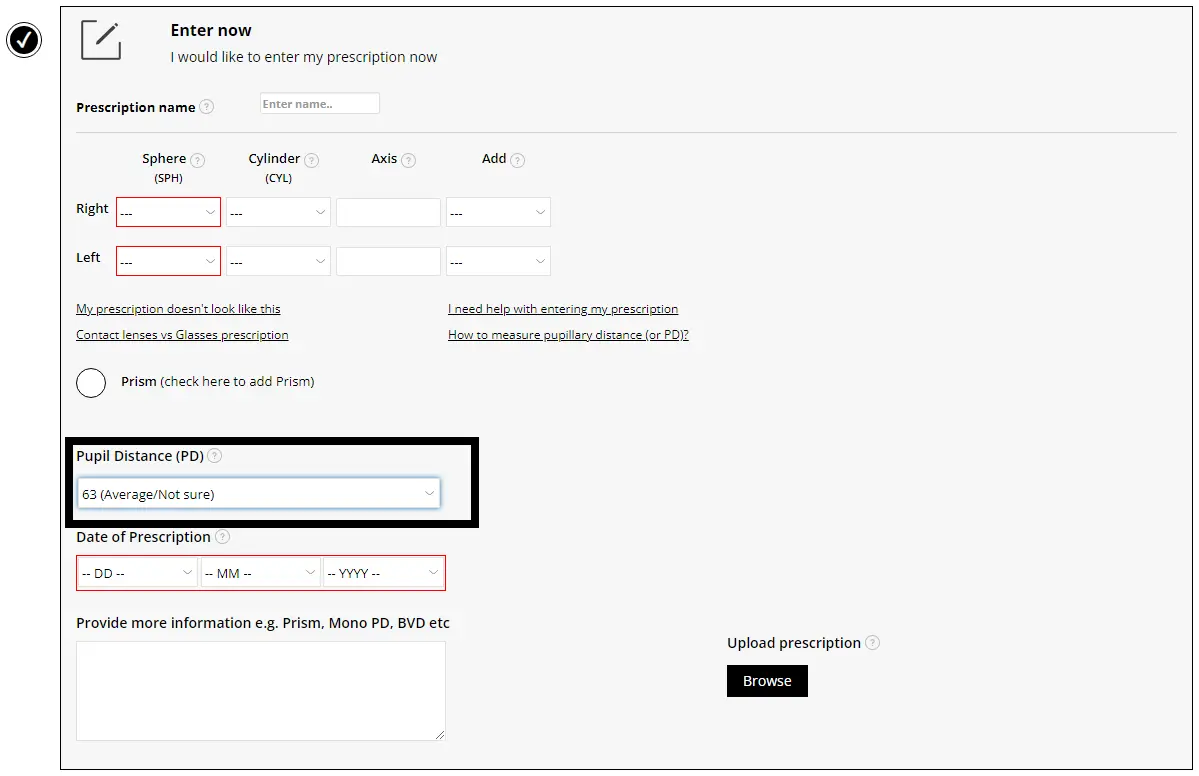
If you don’t have your details just yet or would rather send later, you’ll still be able to place your order and provide this information via email/telephone after your order is placed.
If you have any questions, you can get in touch with our friendly customer service team who will be more than happy to help.
Quick links:
Glasses Frame Size Guide
How to know if your glasses prescription is wrong
How do I read my glasses prescription?
Disclaimer: The advice in this article is for informational purposes only and does not replace medical care or an in-person check-up. Please check with an eyecare professional before purchasing any products or remedies. For information on our article review process, please refer to our Editorial Policy.

 Offers
Offers Account
Account
 Favorite
Favorite
 Basket
Basket

 OFFERS
OFFERS











